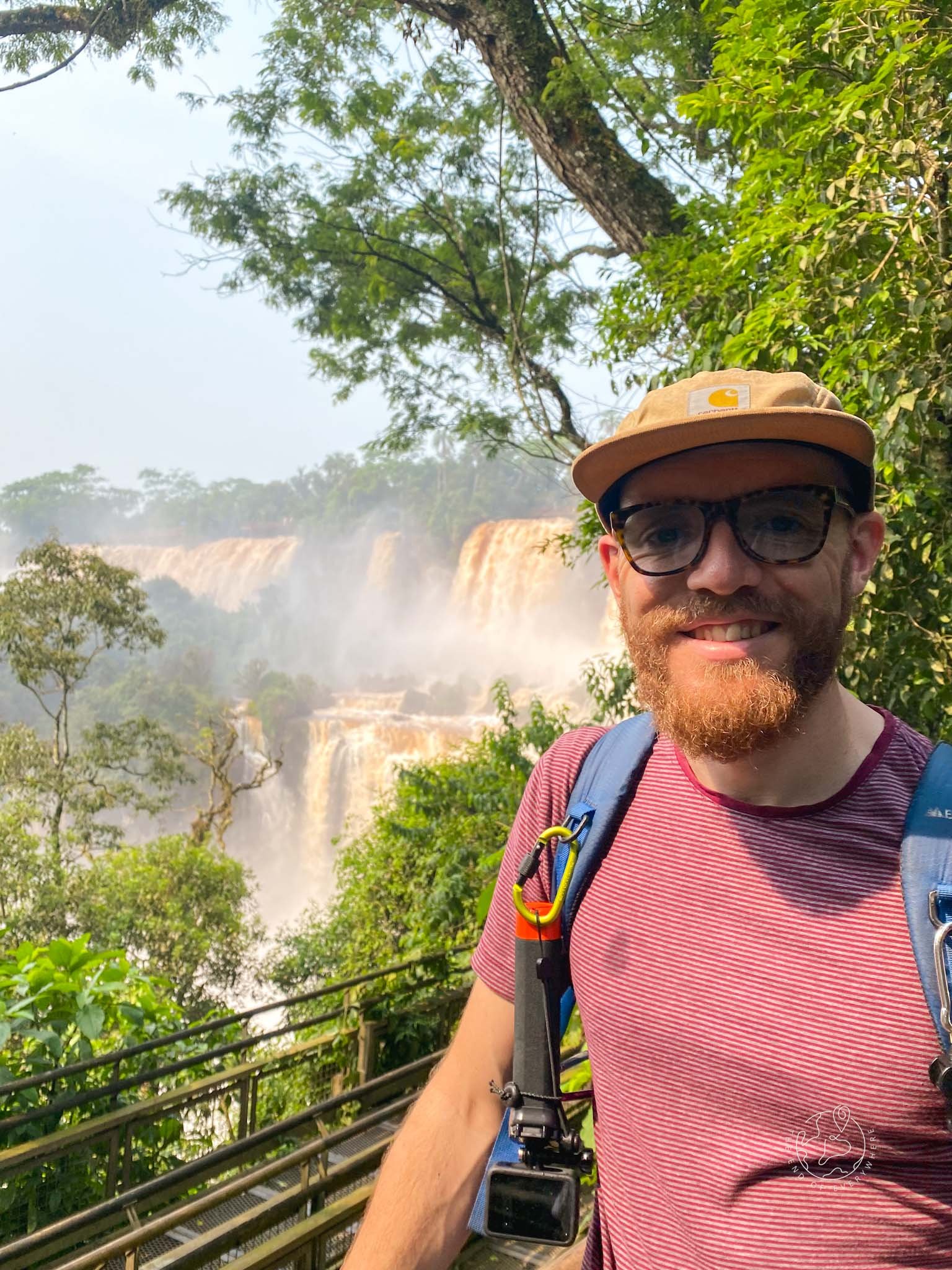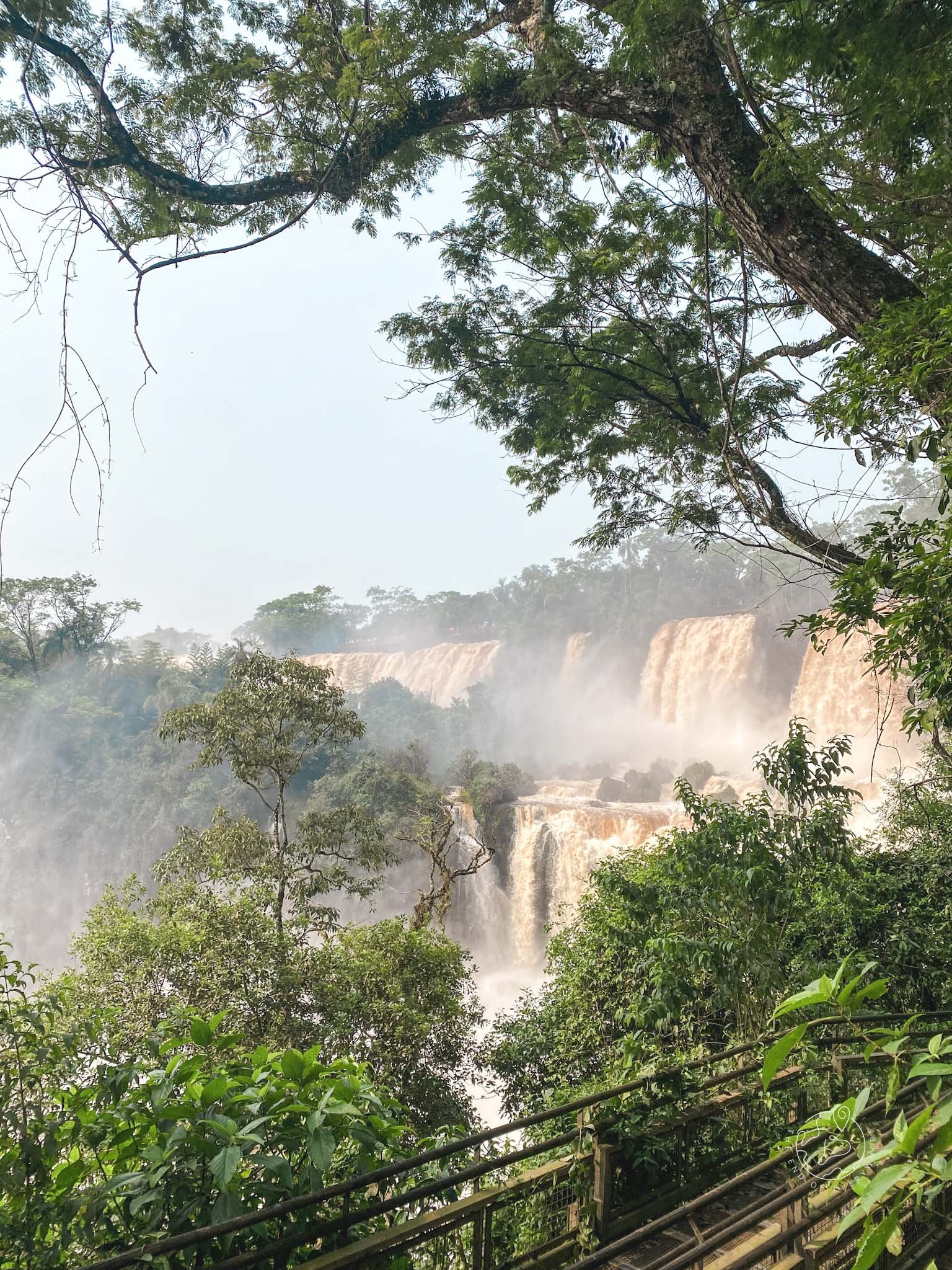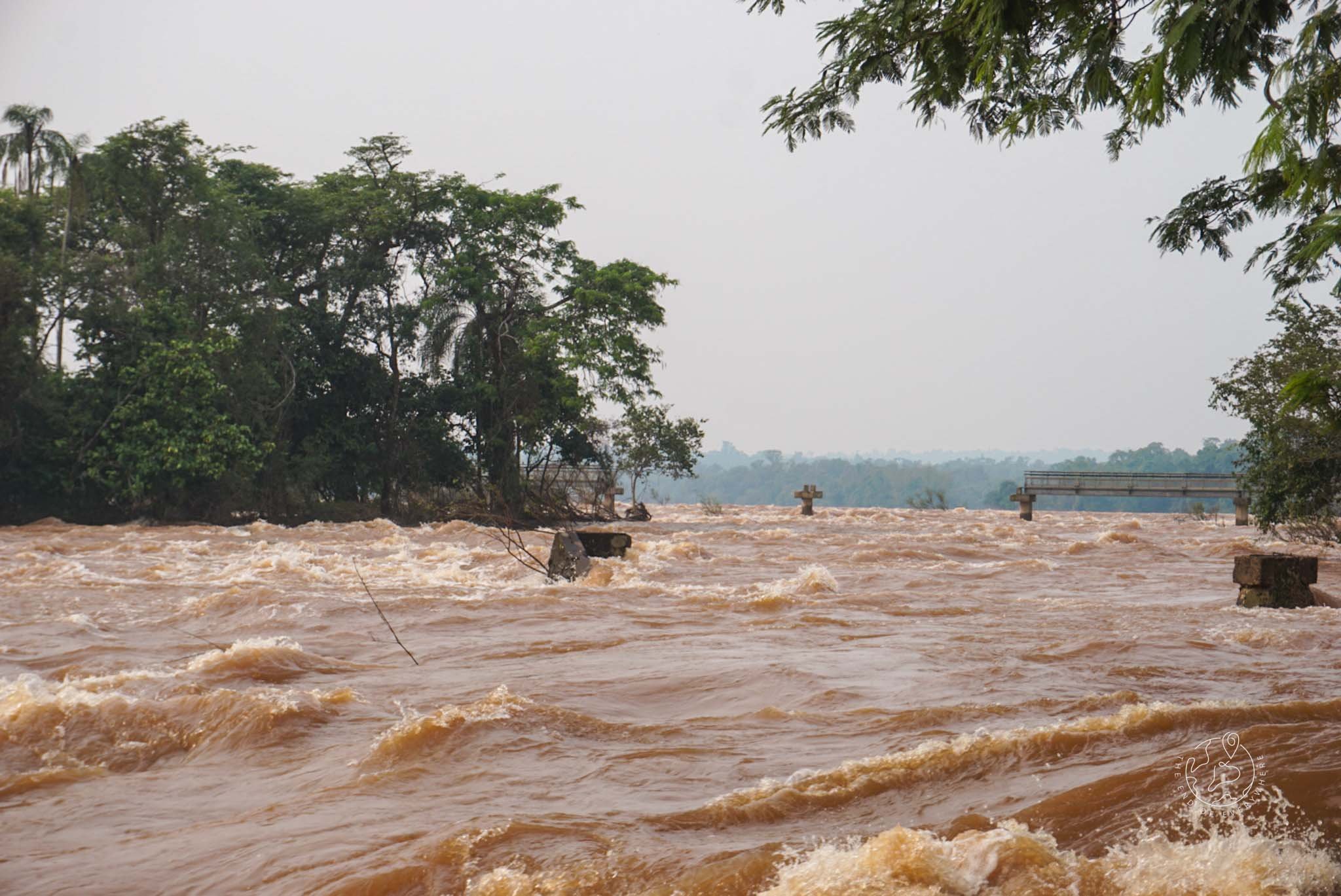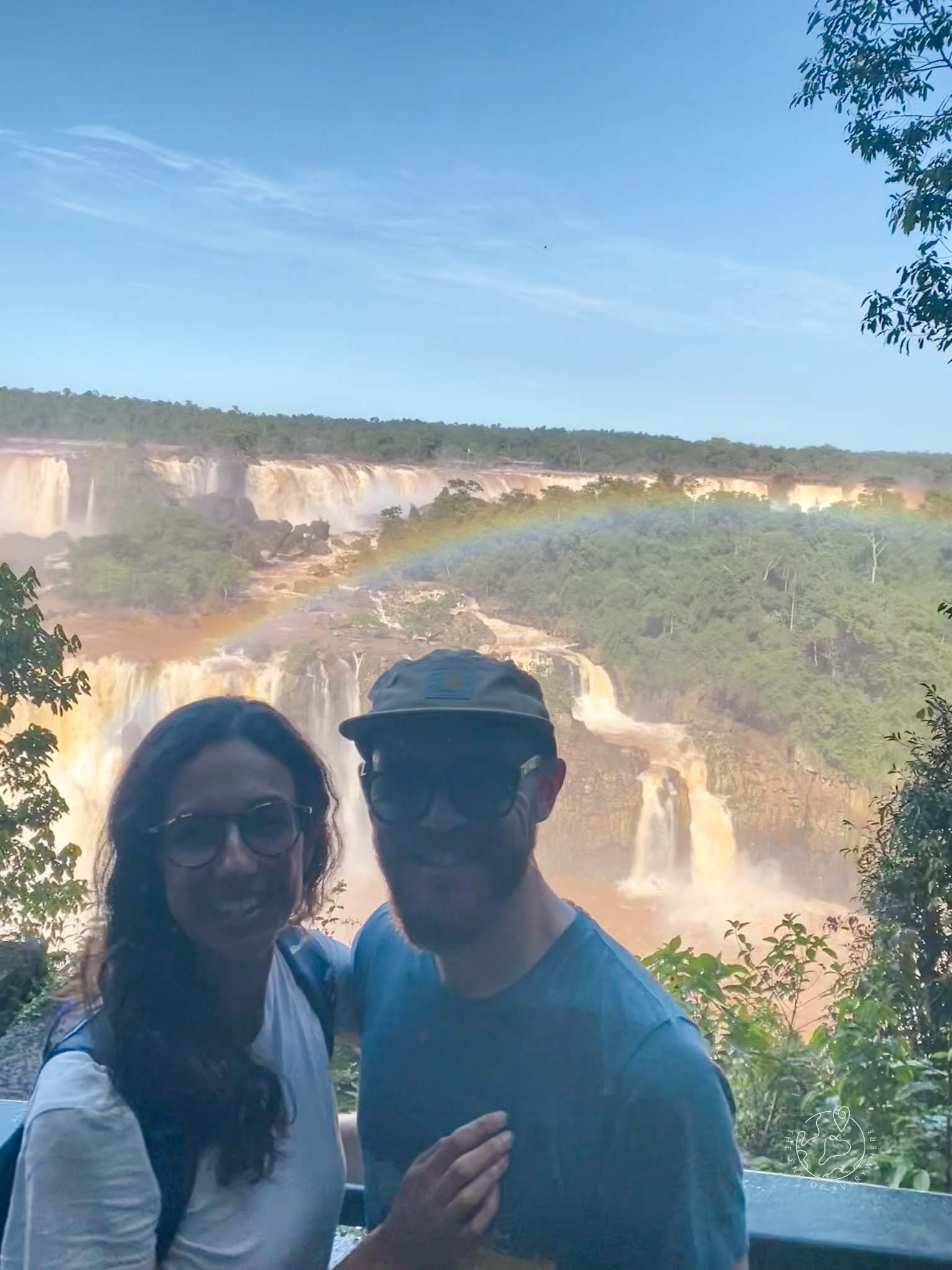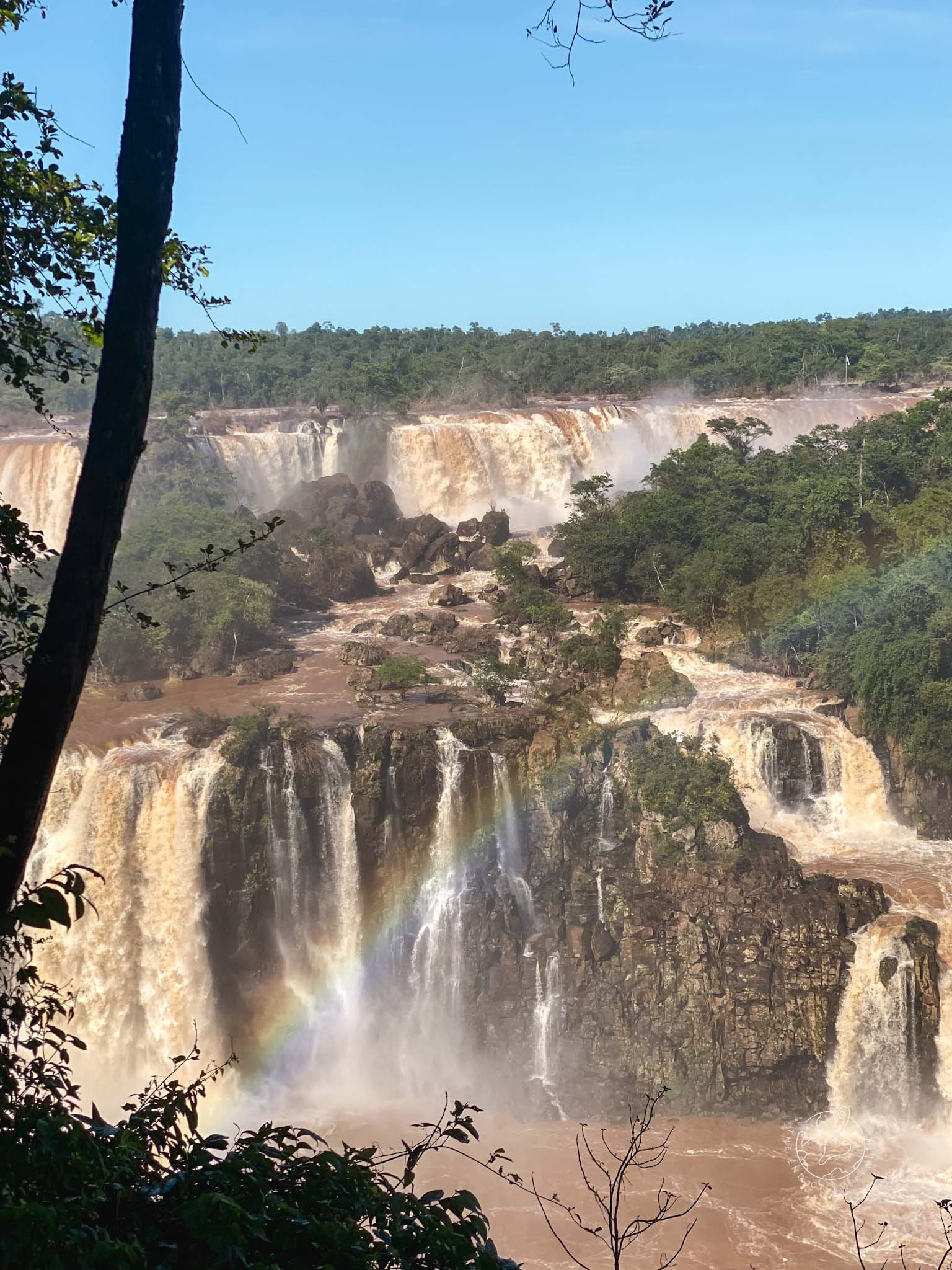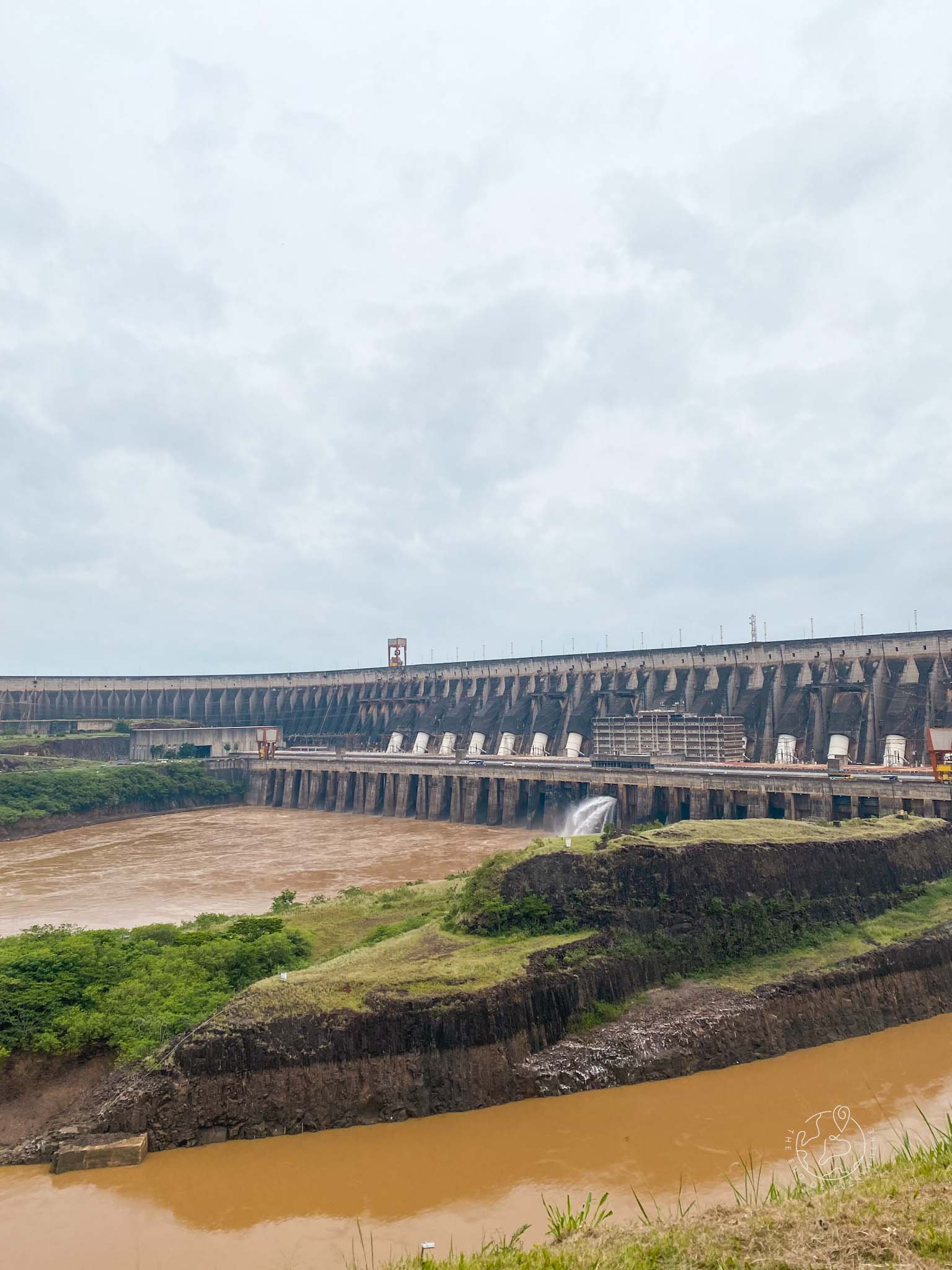Chasing Waterfalls
The view from the Brazilian side of Iguazu Falls
“Poor Niagara.” Eleanor Roosevelt’s famous words upon seeing Iguazu, the incredible complex of waterfalls that straddle the border between Argentina and Brazil, came to my mind as our bus crawled northward through the night. We were heading out of Argentina via one of the seven natural wonders of the world - what a parting gift!
Our jaunt back to Buenos Aires meant we had great bus connections to Puerto Iguazu, the gateway to the Argentinian side of the falls, but also our third 18 hour journey 2 weeks. Ouch. In the end it took 22 hours, the first 7 of which the air con didn’t work.
It was a long, hot, night, that gave way to an even hotter day. Not since our days on the Caribbean coast of Colombia had we felt such oppressive heat, and the instant frizz of my hair said it all: we were back in a tropical climate.
We spent the day exploring the small town, including walking out to the three frontiers monument, where you can capture Argentina, Brazil and Paraguay in one picture. The truth is there is not much else to see in the area, so we got an early dinner and spent the evening in the hostel. ready for the main attraction.
Aside: Geography lesson
Iguazu Falls is formed by the Iguazu River, which originates in the coastal mountains of Paraná in Brazil.
It consists of approximately 275 individual falls along a 1.7-mile stretch. The water volume varies, but during the peak flow, it's one of the world's most powerful waterfalls.
The falls themselves are a result of a geological fault line where the Paraná Plateau meets the lower basaltic rocks. The river encounters a series of faults that lead to the creation of the spectacular waterfall system that is Iguazu Falls.
The waterfalls, situated on the border between Argentina and Brazil, can be visited from either country. According to the guide books and blogs we read, on the Argentinian side you can explore the falls through a network of walkways that provide close-up views of the cascading water. In Brazil, the falls are observed from a distance, offering panoramic vistas. Most sources we looked at said the Argentinian side was better… read on to see if we agree!
The big day, in more ways than one!
The next morning we were on the first bus to the National park that surrounds Iguazu Falls - and it just happened to be my birthday! Spending the day surrounded by one of the most spectacular natural sights in the world? Best birthday ever.
There are two main trails on the Argentinian side of the falls - the superior trail runs along the top of the falls, and the inferior trail lower down. Arriving early meant we shared the walkways with only a handful of other people, great for getting a good view.
It was honestly quite incredible to see. Nine years ago I visited the Brazilian side of the falls but I wasn’t able to cross to Argentina, so to be lucky enough to be back in this area of the world to and see the falls again, with my husband, on my birthday… it was quite an emotional experience. We stood in awe and watched the water thunder over the rocks.
Just two weeks before our visit the park had been forced to close due to heavy rainfall and storms that had quite literally washed away some of the trails. We were lucky the park had reopened in time for our arrival, but the Devil’s Throat route - which some say is the star attraction - was undergoing reconstruction due to damage. We a got a peek of what remains of the walkway and are glad our visit didn’t coincide with the storm!
It was a shame to miss that walkway, but we were grateful for what we had seen and knew we had more to come before the week was over.
That night we went for a fancy meal out to celebrate, and also to toast our last night in Argentina. When it comes to making special memories, for us, Argentina is the country that keeps on giving.
A different perspective
After spending a day crossing the border and settling into a cute studio apartment in Foz do Iguaçu, it was time to do it all over again… but on the Brazilian side of the border.
As I mentioned, I had visited the town back in 2014. Worryingly, though, I remembered very little of place! I usually remember travels in great detail, but other than a few snippets of travelling on the bus to the National park and, of course, the falls themselves, I had no recollection of the town. This may be because, like its Argentinian counterpart over the border, there isn’t too much to see outside the national park.
Once again we were amongst the first visitors through the doors as they opened, on the first bus of the day through the park to the waterfall trail.
The walkway on the Brazilian side is a lot shorter, but it offers a better perspective of the waterfalls from a distance. You can see, front on, water cascading over the rocks and plunging into the river below, birds shooting through the water streams to their hidden nests and, everywhere, rainbows glinting off the water spray in the air. For over a mile, you are greeted with a new spectacular, picture worthy view every few steps.
And the best is at the end. The final walkway leads you out into the river, at the base of one cascade and the top of another, so you can feel the thunderous spray of the water on one side and watch it tumble over the precipice on the other.
If you don’t want to get wet you’ll need to buy a poncho here, but we decided not to… and we got soaked! It was so exhilarating to stand there and to feel the power of the falls first hand, we were quite literally buzzing afterwards!
Argentina vs Brazil: Which side of Iguazu Falls is better?
So… which side did we prefer? If you’ve read much of this blog you’ll know we have a fondness for Argentina, so we must really mean it when we say: Brazil is better.
There are quite a lot of guide books and blogs that say the opposite, and of course we visited the Argentinian side when a major area of the park was closed, but taking everything into account we felt the Brazilian side offered better value. Not only are there sweeping vistas of the waterfalls and rainbows everywhere, the final walkways get so close to the water it’s basically an immersive experience!
Of course the whole complex is incredible and if you can only see one side - like me in 2014 - you are going to be wowed whatever you choose. But when I remember the experience of Iguazu Falls I will always think of Brazil first.
Crossing the Parana to Paraguay
We spent an extra day in Foz do Iguaçu as there was one more, slightly niche and definitely nerdy attraction we wanted to see… with the added benefit of taking us us into neighbouring Paraguay for a day.
The Itaipu Dam, located on the Paraná River on the border between Brazil and Paraguay, is one of the world's largest hydroelectric power plants. Look, not everyone will go out of their way to see a dam but, for us, this is pretty cool stuff!
The dam was officially inaugurated in 1984 is a genuinely incredible engineering achievement. Its massive concrete structure harnesses the energy of the Paraná River and creates Itaipu Lake.
It one of the world's most powerful hydroelectric plants, providing 80% of Paraguay’s energy - making it one of the greenest countries in the world - as well as proving some of its power to Brazil. The most mind-blowing thing we learnt that day? The plant produces enough energy in a year to power the entire world for a month. In. Sane.
The only drawback of the day is that the dam area is a Bi-National zone… as visitors this means no immigration and no passport stamp. But hey; we crossed the river so were absolutely in Paraguay - there were even Paraguay magnets for sale!
Three countries in one weekend, incredible natural wonders and an engineering feat to marvel at… They say start as you mean to go on, and if my first weekend as a 34 year old is anything to go by, this year will be one to remember.
Related Content






